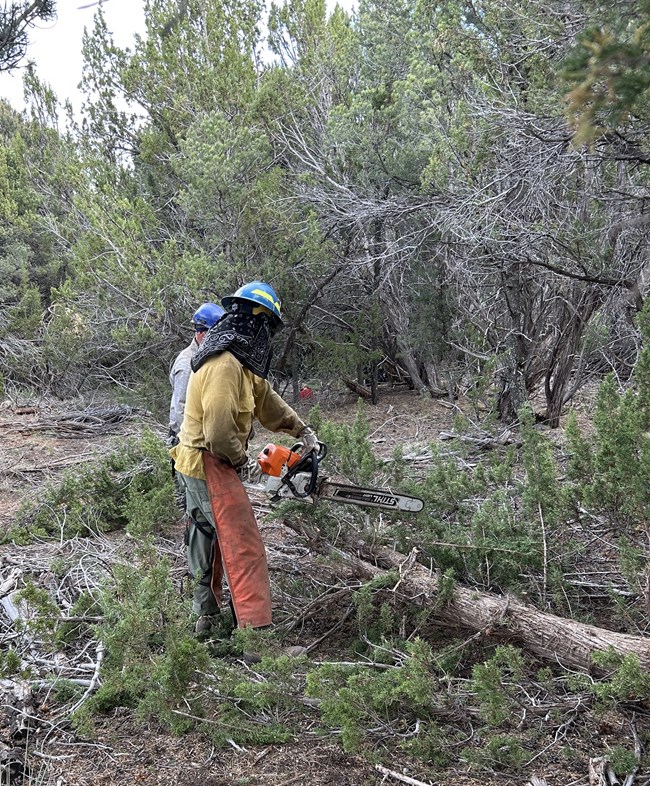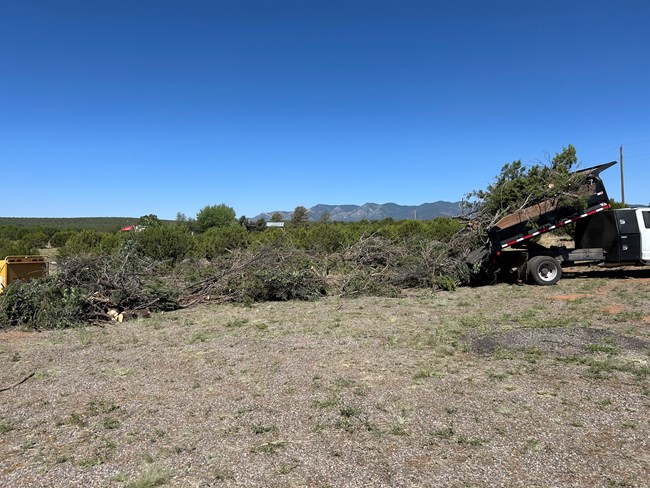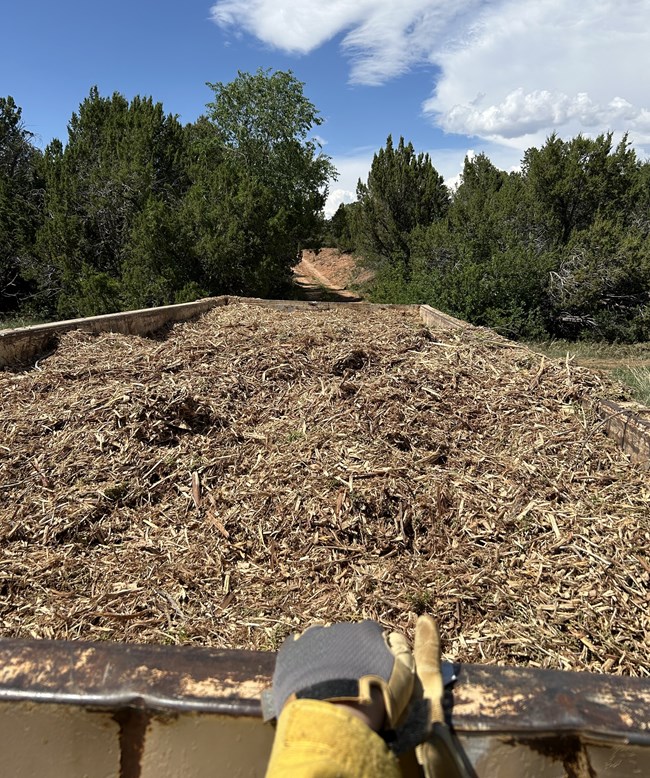Last updated: July 11, 2025
Article
Fire mitigation project protects archeological sites at Salinas Pueblo Missions National Monument

NPS/Parrish
The project, known as the Quarai Museum Defensible Space Thinning Project, reduced potential wildfire risk to historic and archeological resources and park infrastructure. The project also reduced wildfire risk to visitors and park staff near the park’s visitor center complex, which also houses some of the park’s irreplaceable museum collection.
The thinning unit included four large archaeological sites, all of which are eligible for the National Register of Historic Places. Three of the sites had fire sensitive features: a large historic metal can/glass bottle dump, a wooden animal pen, and a wooden corral. Vegetation removal from in and around these archaeological features will provide increased protection from wildfire, better preserving them for the future. Fire-sensitive sites, if mitigated properly and protected during a wildfire, can survive if conditions are right.

NPS/Parrish
The fuels work was done with extraordinary care to prevent damage to the archeological sites. Crew members conscientiously hand-carried cut vegetation out of the boundaries of the sites to avoid dragging vegetation and damaging resources. The fence line was cleared to a four-foot buffer and special attention was taken to remove vegetation around utility facilities, such as the park’s propane tank. In addition to protecting known cultural resources in the park, a Civilian Conservation Corps-era wall that had previously not been recorded was discovered after thick vegetation was removed as part of the fuels mitigation work.

NPS/Parrish
This project was made possible by funds available through the Infrastructure Investment and Jobs Act.
